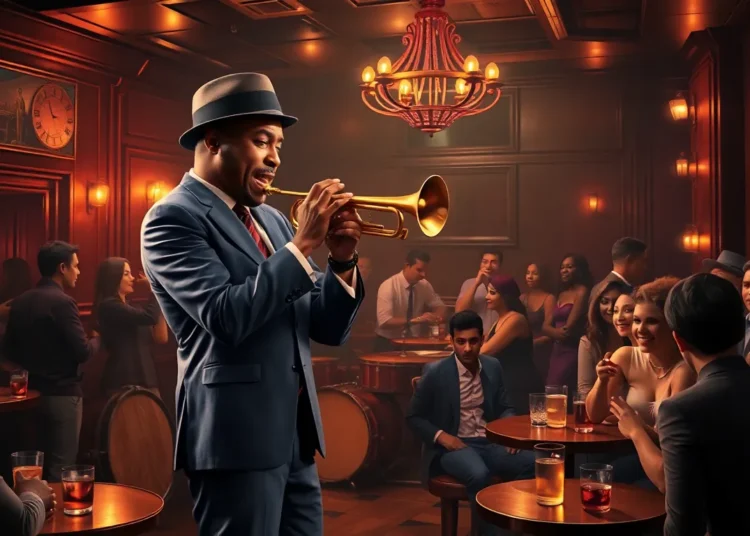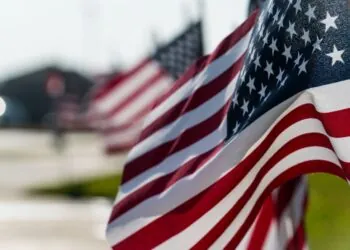In the heart of Harlem during the 1920s, jazz clubs sprang up like wildflowers, each one a vibrant hub of creativity and culture. These venues weren’t just places to hear music; they were the pulse of a movement that transformed American art and society. Picture this: smoky rooms filled with the sounds of trumpets and saxophones, where legends like Duke Ellington and Ella Fitzgerald took the stage and left audiences spellbound.
Jazz clubs became the meeting grounds for artists, writers, and thinkers, all eager to bask in the rhythm of change. The infectious energy of these spots drew in crowds from all walks of life, proving that when it comes to music, everyone’s welcome. So, grab your fedora and prepare to dive into the enchanting world of Harlem Renaissance jazz clubs, where every note tells a story and every performance is a celebration of life.
Harlem Renaissance Jazz Clubs
Harlem Renaissance jazz clubs emerged as significant cultural hubs in the 1920s, shaping American music and society. Venues like the Cotton Club and the Apollo Theater became iconic, hosting legendary performers such as Duke Ellington and Ella Fitzgerald. These clubs provided a platform for African American artists, showcasing their talents amidst the backdrop of racial segregation.
The vibrant atmosphere of these establishments drew diverse crowds, illustrating jazz music’s unifying power. Patrons included local residents, socialites, and artists, all eager to experience dynamic performances. Musicians experimented with new sounds, influencing genres that would resonate for generations.
Some clubs showcased late-night jam sessions, where the creative energy surged. Others offered structured performances with orchestras and featured soloists. Patrons embraced the rhythm of the night, dancing and engaging in spirited conversations amid the music’s allure.
Jazz clubs in Harlem contributed to the cultural renaissance, encouraging collaboration among artists and intellectuals. The convergence of different artistic mediums fueled innovation and expression. Community discussions often blossomed between sets, sparking movements that transcended music.
Documented accounts reveal how these venues influenced broader cultural trends. Scholars highlight the significance of these spaces in fostering creativity, inviting artists from various backgrounds to share their work. Harlem’s jazz clubs remain a symbol of resilience, creativity, and community spirit.
During the 1920s, the impact of Harlem’s jazz scene echoed throughout the United States, laying the groundwork for future musical developments. Today, these clubs are celebrated not just for their historical importance but also for continuing to inspire modern artists and musicians.
Historical Significance

The Harlem Renaissance jazz clubs established themselves as vital cultural institutions during the 1920s. These venues not only celebrated music but also fostered creativity and dialogue.
Cultural Impact
Jazz clubs in Harlem became melting pots of artistic expression. They played a crucial role in shaping American culture by promoting African American artists. Music transcended social barriers, uniting individuals from diverse backgrounds. Patrons experienced a unique blend of rhythm and storytelling that reflected societal challenges. Moreover, these clubs offered a safe space for artists to explore and push boundaries, leading to significant cultural movements. The vibrant atmosphere encouraged collaboration among musicians, writers, and thinkers, influencing future art forms and cultural expressions.
Key Figures and Performers
Influential artists emerged from the jazz scene, leaving a lasting legacy. Duke Ellington transformed jazz into a refined art form, while Ella Fitzgerald’s vocal prowess captivated audiences worldwide. Louis Armstrong’s innovative trumpet playing redefined the genre. Other prominent figures included Cab Calloway and Billie Holiday, whose contributions further enriched Harlem’s musical landscape. Each performer brought distinct styles, shaping the evolution of jazz. Their performances at iconic venues like the Apollo Theater created a platform for African American talent, challenging racial stereotypes and paving the way for future generations of artists.
Notable Jazz Clubs
Harlem’s jazz scene thrived in several iconic venues that showcased extraordinary talent and rich cultural experiences.
The Cotton Club
The Cotton Club emerged as a premier venue during the Harlem Renaissance. Showcasing performances by legends like Duke Ellington and Cab Calloway, it drew in diverse crowds despite racial segregation. Exclusive in its early years, the club featured only Black performers yet catered primarily to white patrons. Lavish decor complemented the high-energy shows, creating an atmosphere of excitement and artistry. The club’s influence extended beyond music, helping to elevate African American culture in mainstream society.
Small’s Paradise
Small’s Paradise represented a vibrant gathering spot for jazz enthusiasts. Known for its welcoming and lively ambiance, it served as a popular venue for both emerging and established artists. Guests enjoyed late-night jam sessions and spontaneous performances, enhancing the communal spirit of the club. Notably, Billie Holiday graced the stage, captivating audiences with her soulful voice. The establishment fostered connections among artists and patrons, contributing to Harlem’s creative landscape.
The Savoy Ballroom
The Savoy Ballroom became a legendary dance hall, celebrated for its swing music and unique atmosphere. Renowned for hosting numerous big bands, including those led by Count Basie and Duke Ellington, it attracted dancers from all walks of life. Guests experienced a blend of music and dance that transcended boundaries, embodying the inclusive spirit of jazz. The ballroom’s floor allowed dancers to showcase their talents in a dynamic space, encouraging artistic expression and social interaction. Its legacy continues to influence the world of dance and music today.
The Evolution of Jazz During the Era
Jazz underwent significant transformations during the Harlem Renaissance, showcasing a blend of rhythmic complexity and emotional depth. Innovations in musical styles emerged, characterized by improvisation, syncopation, and unique instrumentation. Artists experimented with arrangements, creating new sounds that pushed boundaries. The fusion of blues and ragtime in jazz songs contributed to its widespread appeal.
Musical Innovations
Innovative approaches defined the jazz scene, emphasizing creativity. Artists explored varied genres, leading to the development of bebop and swing. Notably, Duke Ellington integrated orchestral elements into performances, expanding jazz’s musical richness. Billie Holiday’s vocal style introduced unique phrasing, challenging traditional norms. Cab Calloway’s energetic performances captivated audiences, blending humor and music in striking ways. Each artist’s contributions helped shape distinct subgenres, further enhancing jazz’s legacy.
Influence on Future Generations
Jazz from the Harlem Renaissance significantly shaped subsequent musical developments. Its improvisational nature inspired future genres like rhythm and blues and rock and roll. Musicians began incorporating jazz elements into pop music, broadening its influence. Ella Fitzgerald’s vocal techniques and Louis Armstrong’s trumpet style set standards for aspiring artists. Documentaries and research highlight how the era’s cultural richness informed societal changes and fueled artistic movements. Overall, the legacy of Harlem’s jazz scene laid the groundwork for generations of musicians to explore and innovate across various styles.
Conclusion
The jazz clubs of Harlem during the Renaissance stand as powerful symbols of artistic expression and cultural unity. They provided a stage for legendary musicians and a space for diverse audiences to come together. The legacy of these venues continues to resonate today, influencing countless genres and inspiring new generations of artists.
The vibrant atmosphere and innovative sounds birthed in these clubs shaped not only music but also the broader cultural landscape. As the echoes of jazz linger on, they remind us of the transformative power of art in bridging divides and celebrating creativity. Harlem’s jazz scene remains a testament to the enduring spirit of community and collaboration.










